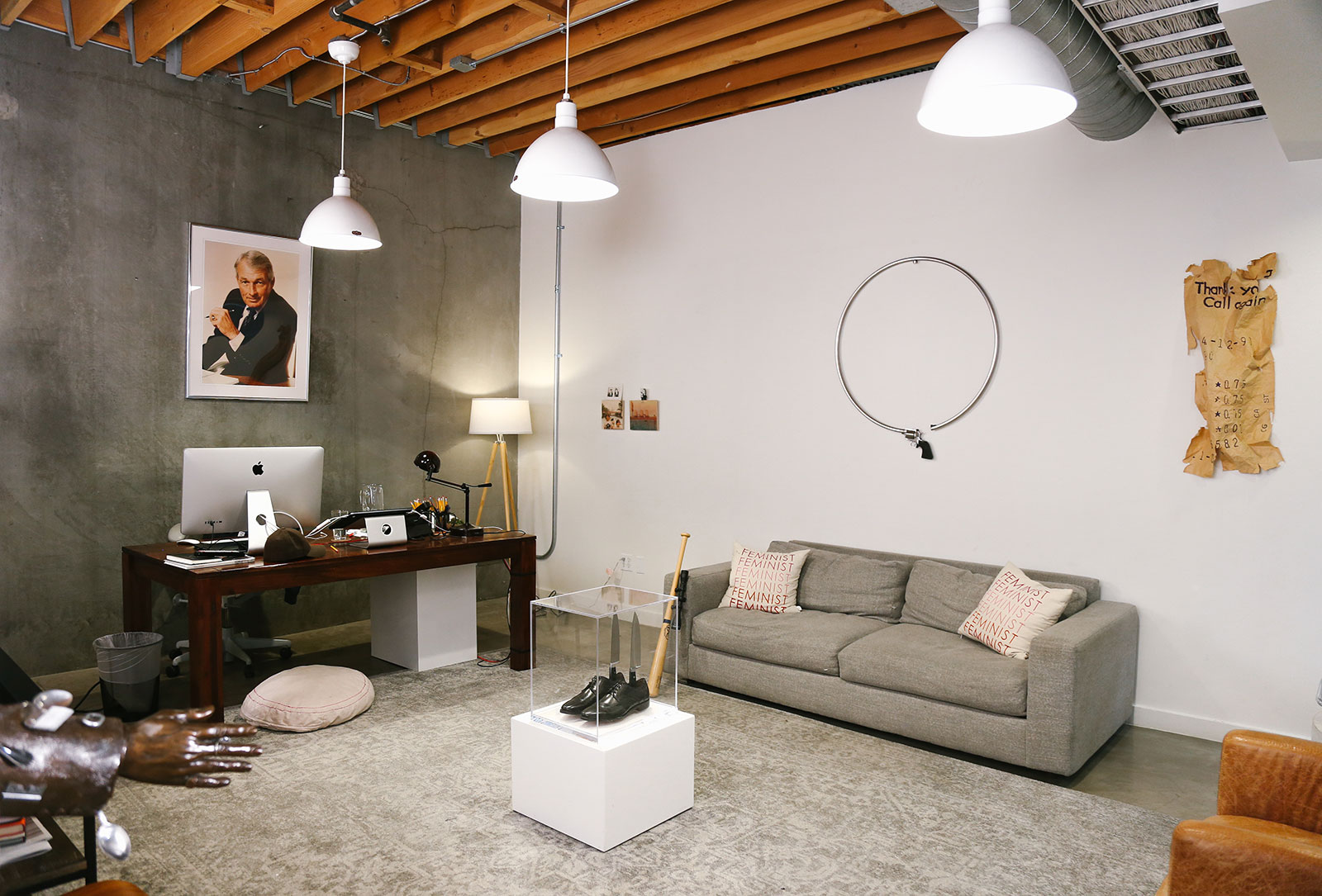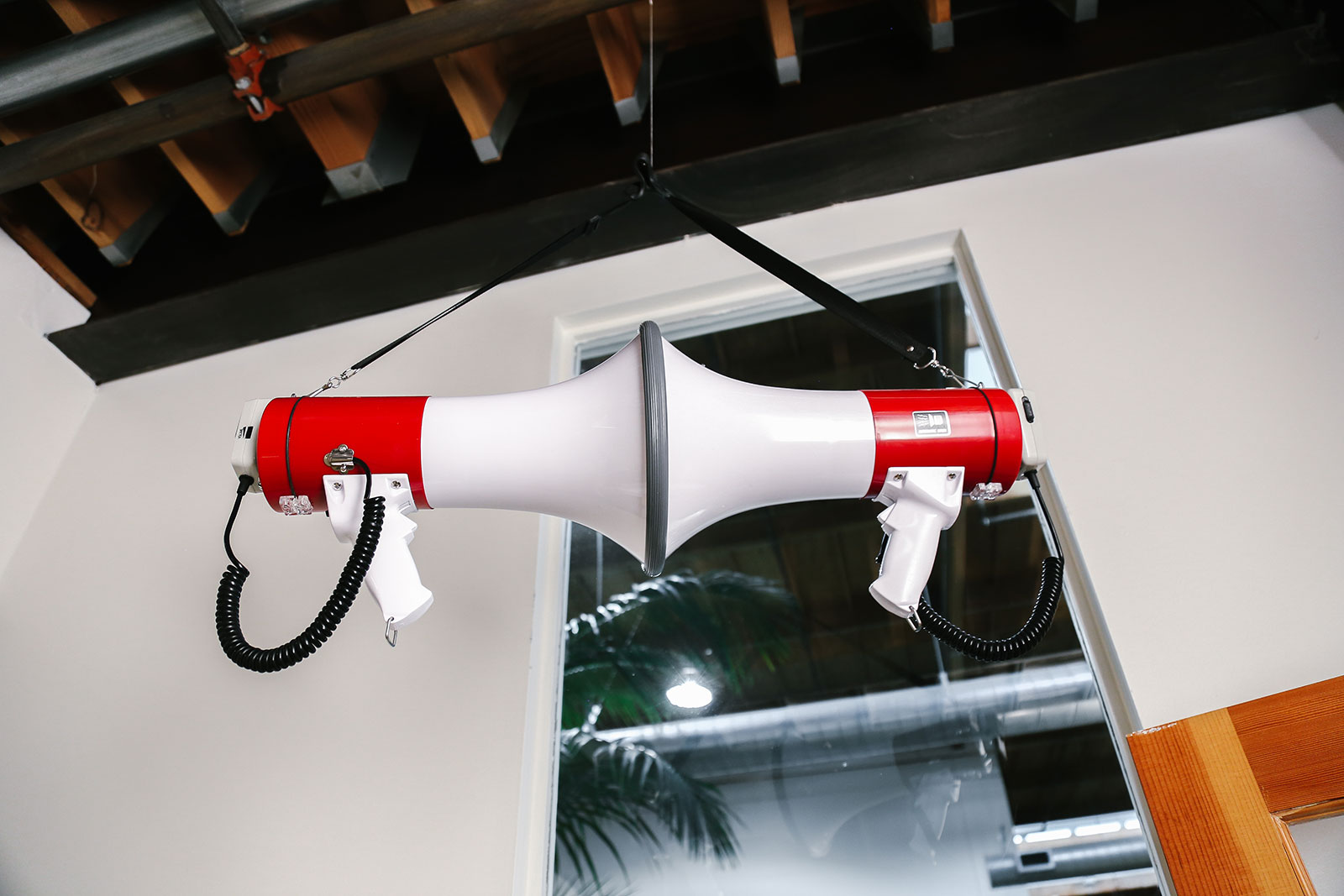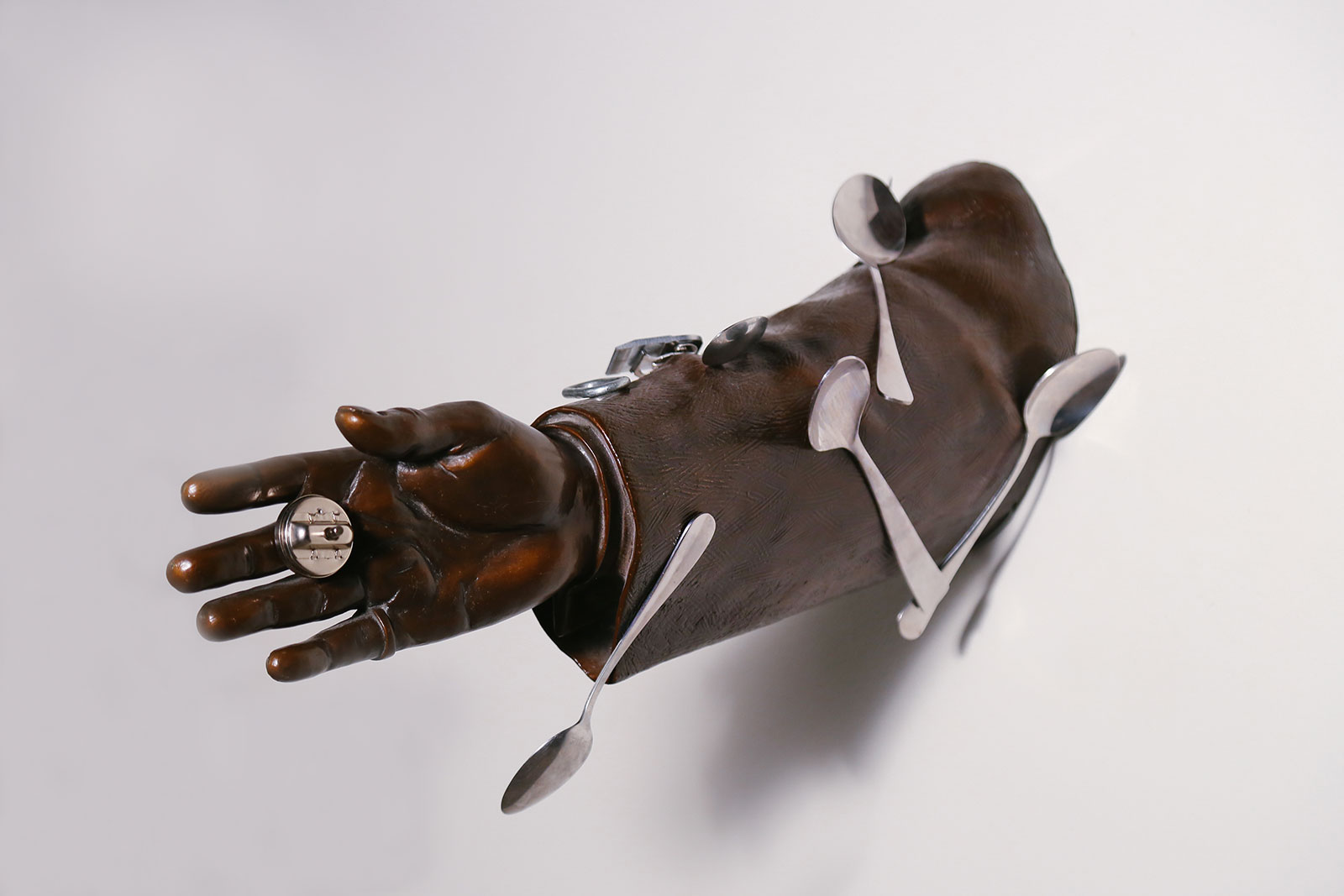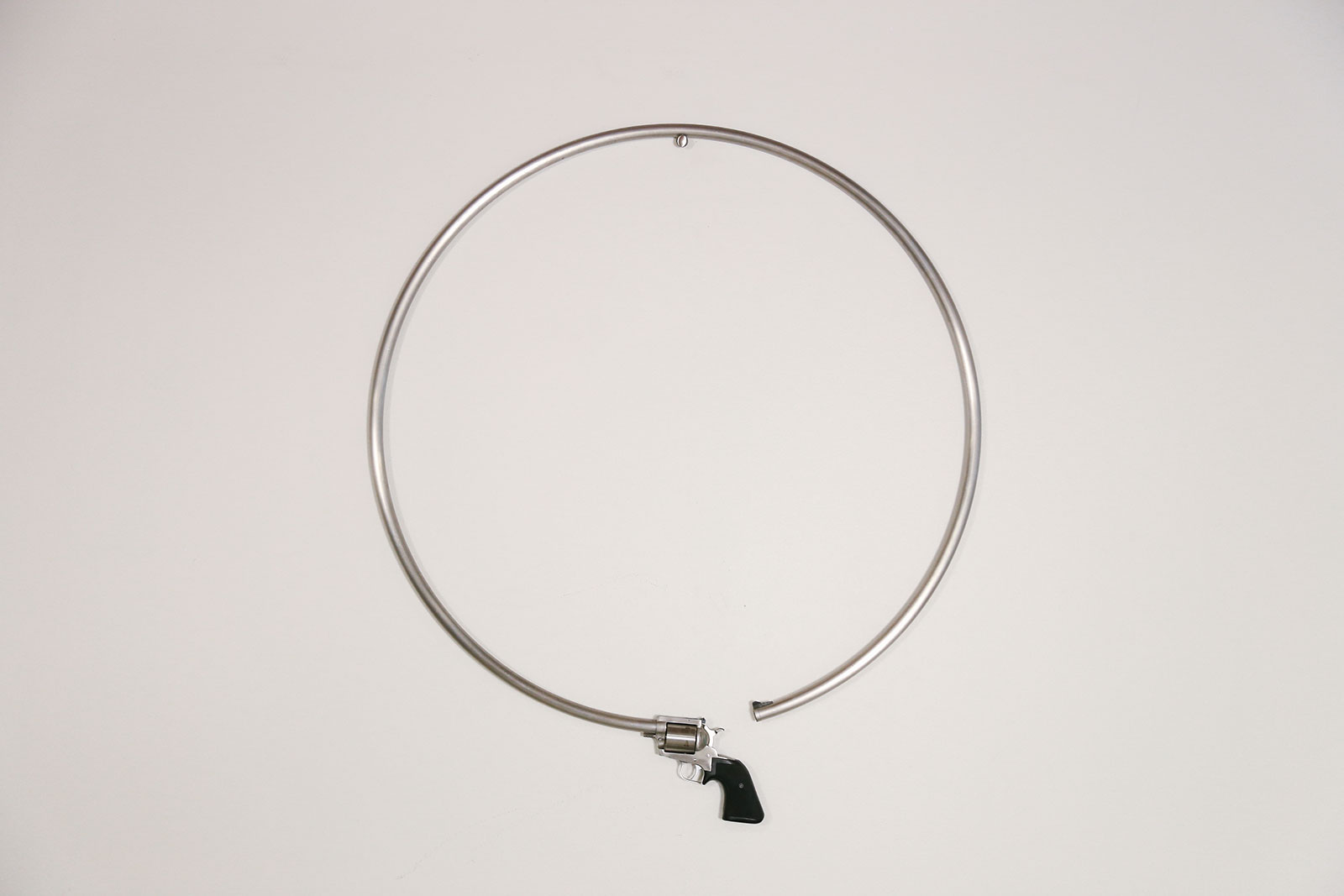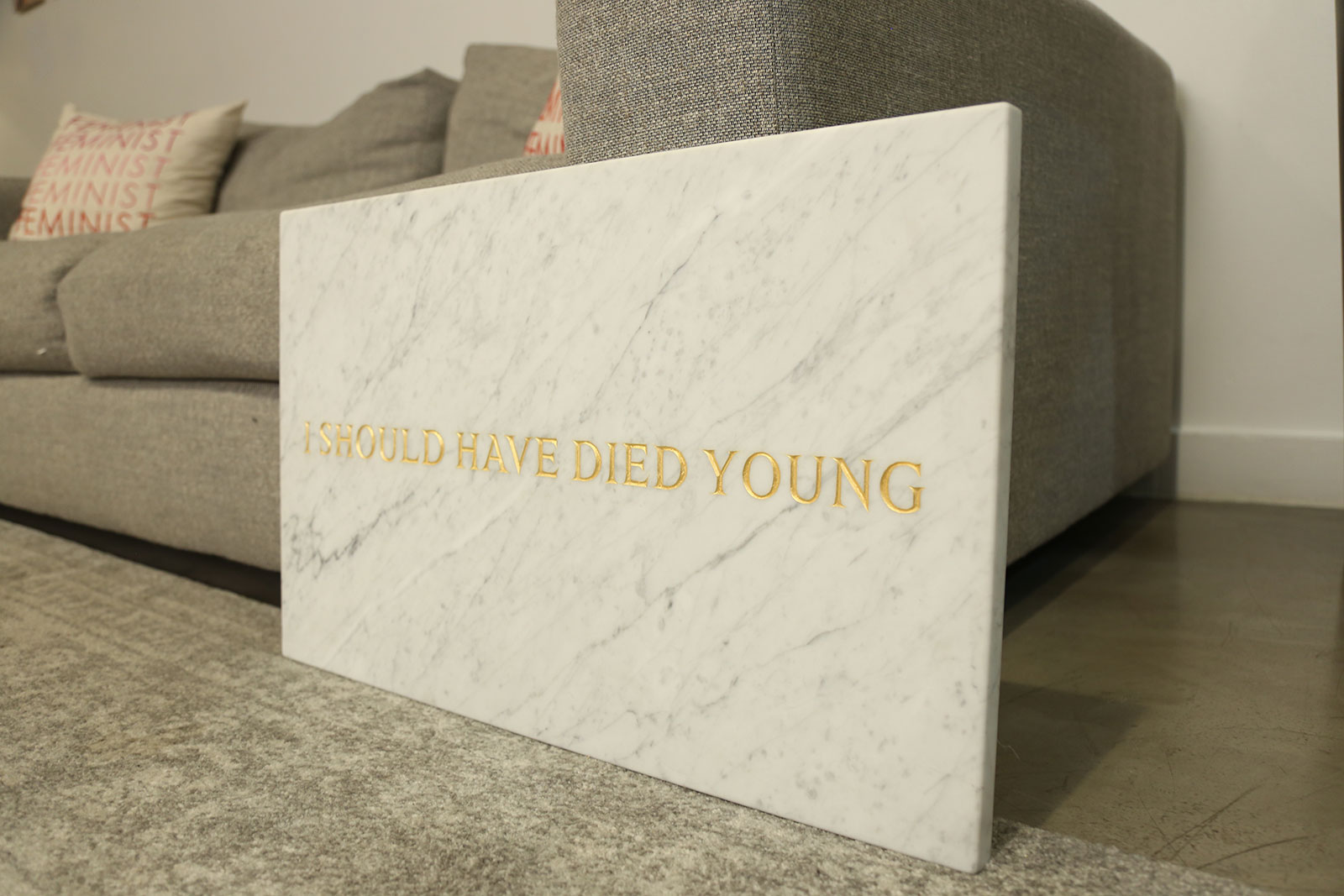Inside Gavin Lester's Office at Zambezi
Symbols of self and unexpected creativity
I lead the agency’s creative department and I’m also a practicing conceptual artist. My work focuses on exposing the many ways people are manipulated and misguided by language, symbols, assigned values, accepted social mores and cultural constructs. My art also seeks to celebrate, explain and commemorate what it means to truly be ourselves in today’s culture, and how many of us fight the good fight to get there.
In my workspace, I’ve blended my professional and personal worlds because I like to be surrounded by my objects. (And in truth, my house is full of my art, so I’m running out of space.) Having my art around me reminds me of who I am and how creativity can be found in unexpected ways, and hopefully encourages the members of my creative department to do the same.
Any creative person is aware that inspiration comes from many different places, and I believe it’s important for them to have outlets to hone their skills and use their creativity in ways they find meaningful. Many people have outside endeavors like I do, and I believe they should share them with each other. All of our creative efforts make us better in our work and at advertising.
Here are a few highlights of my work, as well as other pieces, that I’ve brought to the office:
My latest piece, the horns facing each other, may speak to where we currently stand politically. The positions of both sides are so extreme that they’re almost behaving the same way, talking at each other instead of to each other.
Some of my work centers around forces. I love the way magnets steal whatever they are attracted to. This piece features a magnetic arm reaching out to shake your hand. It’s a play on what we perceive to be a successful, modern businessman. A lot of the things in a typical office are business-oriented—the cadence, the language, the handshakes. I have this piece by my door because in business the handshake represents not only a seemingly friendly gesture, but the closing of a deal.
Another piece I have on display is the gun “Ouroboros,” which is a modern take on the ancient symbol of the serpent eating its tail. To some, it speaks to current violence and gun crime and what’s been going on in our society. That was not my intention, but I find it interesting that what people bring to a work of art and historical events can feed into what they see as its meaning.
Women have been historically suppressed—from equal pay, to leadership roles, to reproductive rights. But growing up, I never saw the difference. I was a momma’s boy, and I’ve always seen women as on an equal level with men. One of my favorite artists, Louise Bourgeois, was not even recognized by the art world until she was into her 70s. The pillows are a gesture of putting the message of equality out there and being supportive of it. This is a moment in time for women to finally get the recognition and positions they deserve.
I first saw this epitaph at a time when I was working at an agency and feeling particularly uninspired. Up until that point I’d had a “successful” career, but I was also feeling creatively suffocated. When you look at artists like Jimi Hendrix, Jim Morrison, Kurt Cobain or James Dean—all the guys who died too young—they each left a legacy that wasn’t polluted. Life is too short to feel confined and unhappy. This piece reminded me of that.
It’s empowering to be around things that help remind you of who you are. Sometimes when we come in to the office, we are in situations where we have to change our personality somewhat. We are different with our bosses and colleagues than we are with our wives, husbands or children. We’re constantly adapting, to some extent. At work, we often feel less free to say what (or at least all of what) we’re thinking or feeling. So, I communicate through my work. My art pieces are unregulated; they are purely me.





